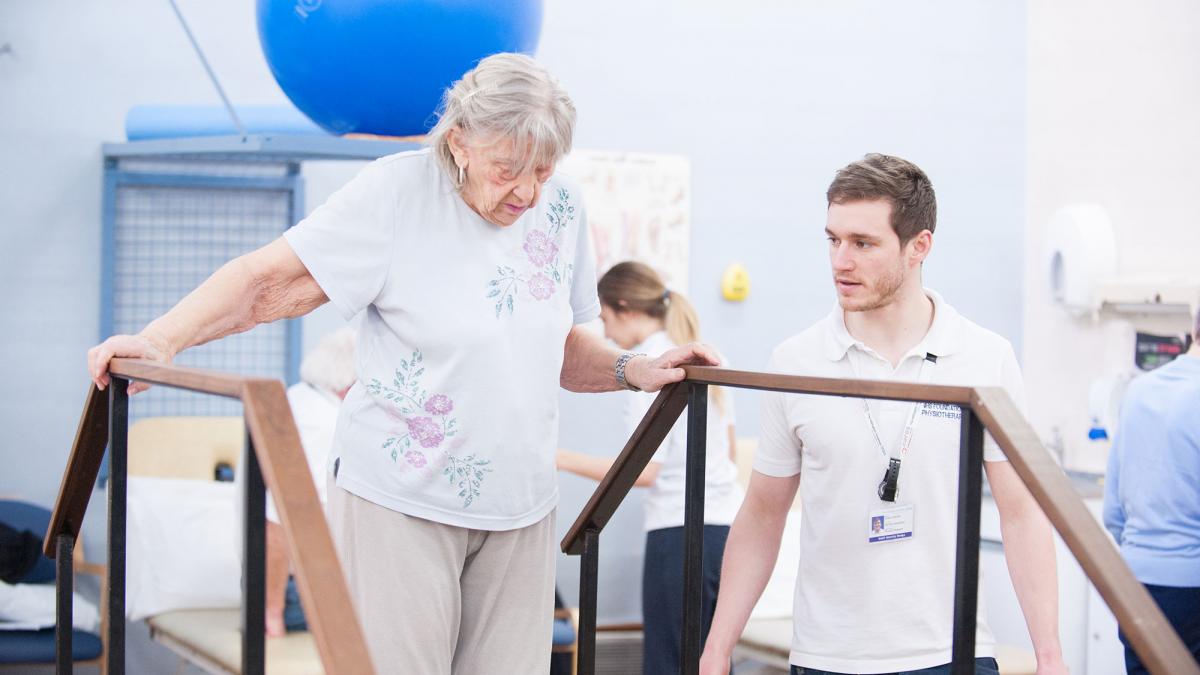Large variations in the rehabilitation many patients receive after suffering a hip fracture are targeted in new standards published by the Chartered Society of Physiotherapy.

The standards, the first of their kind for hip fracture, state that all patients should receive two hours of physiotherapy in the first week after hip fracture surgery, followed by at least two hours weekly until they have made a full recovery.
They were developed after a major audit earlier this year found:
- Some patients in England and Wales were receiving less than an hour of physiotherapy a week whilst others were waiting up to 80 days before receiving ongoing rehabilitation once they left hospital
- There is a ‘postcode lottery’ of care with only one in five health services successfully maintaining the continuity of their patients’ rehabilitation following an operation
- One in ten community services receive no handover information at all about hip fracture patients
Delays in starting treatment after a hip operation can have devastating and long-lasting consequences for a person’s physical and mental health and may prevent someone from regaining the strength and mobility they need to avoid falls and fractures in the future.
Despite this, there are currently no rehabilitation guidelines for what happens after people leave hospital.
As a result of the audit the CSP has drawn up best practice standards for the rehabilitation of people with hip fracture in the UK. The new standards state that a physiotherapist must assess all patients on the day of, or day following, their hip fracture surgery to put a rehabilitation care plan in place. A physiotherapist must also be part of every hospital’s Hip Fracture Governance programme, which should have responsibility for all stages of the pathway of care.
Alex Mackenzie, CSP Council Chair, said:
'Our ageing population means there are more people than ever before at risk of hip fracture and it is vital they can access high quality, timely and intensive rehabilitation.
'Rehabilitation must start from day one following surgery and continue without a wait, until a person is ready to leave hospital, and is able to resume normal activities. It is vital we give people the best opportunity to regain their mobility and above all, their independence.'
Iona Price, Deputy chair of the Falls and Fragility Fracture Audit Programme, lost her 88 year old mother to a chest infection; one of the risk factors for hip fracture patients who do not receive continuous rehab after leaving hospital. She said:
'My mum had to be discharged to a new nursing home as after the hip fracture she was unable to walk or even without help. She was also experiencing delirium which meant she wasn’t able to engage with the physiotherapy staff on the acute ward.
'As a result she was transferred to a quieter nursing home environment where she soon began to recover and feel like her old self. However that’s when we realised her care wasn’t going to be joined up. As she’d been discharged from the acute unit she now had to be referred to the community physiotherapy team as a 'new referral' which meant she had to wait for months before she had access to any kind of rehabilitation. This lost time was something she was never able to get back and it sadly meant she never made a full recovery.'
Hip fracture is the most common cause of injury related death in adults. It costs the NHS and social care £1 billion per year, and affects one in three women over 50.
Studies show that strengthening activities are shown to help prevent falls and other ill health as we age – and reverse the process whereby we lose up to 8% of our muscle mass each decade from the age of 30.
Find Out More
Number of subscribers: 8